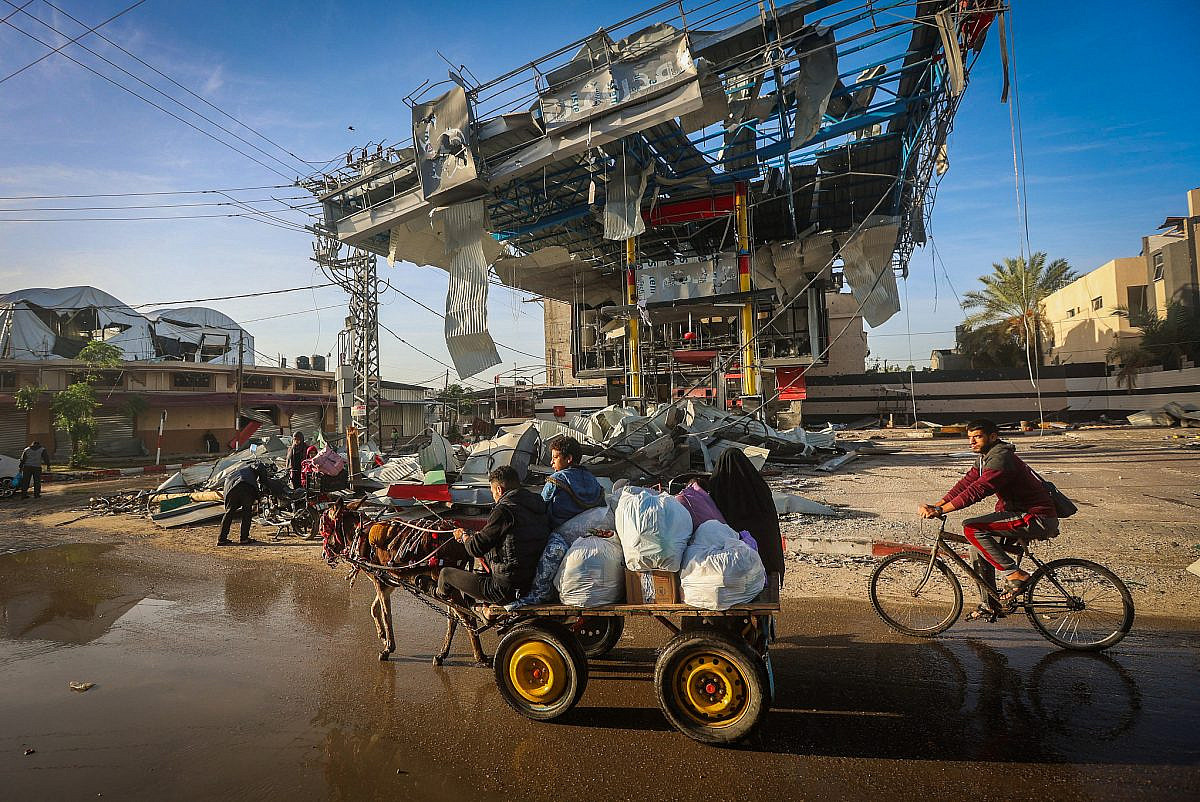After 47 days of continuous bombing and destruction, the news that Israel and Hamas had reached a temporary ceasefire agreement was met with cautious relief here in Khan Younis, in the southern Gaza Strip. Since 7 a.m. on Friday, Nov. 24, life has slowly begun to return to something resembling how it looked before the war, with families leaving their homes and shelters for the first time in weeks to check on their relatives or to try and find cooking gas and food. But the relief also brings sorrow and anxiety, as people face up to the scale of the devastation caused by Israel’s bombardment — including the loss of loved ones and homes.
Khan Younis has become heavily overcrowded in recent weeks amid an influx of displaced people from the north, which Israeli troops have invaded, and the areas in the east close to the fence that encages Gaza, which have faced intensive airstrikes and shelling since the beginning of the war. As a result, the city’s population has tripled to approximately 700,000, with residents new and old seeking shelter in hospitals, schools managed by the government and the UN Relief and Works Agency (UNRWA), and the homes of friends and relatives.
Conditions in the city in recent weeks have been incredibly difficult. The roads in the city center are badly damaged, and getting around by car is almost impossible. The markets long ago ran out of food, and we have also faced severe water shortages. Although the temporary ceasefire has allowed for the entry of more humanitarian aid, this is nowhere near sufficient to address the needs of the population after nearly two months of Israel’s bombardment and intensified siege.
The night of Thursday, Nov. 23 — only hours before the truce was due to take hold — was one of the most violent nights since the war started. Many of us expected this, since Israel often intensifies its attacks on Gaza right up until the last moment before a ceasefire begins.
That night, we could hear violent clashes between the army and the Palestinian armed resistance, and the sounds of exploding tank shells and airstrikes closeby. In the Al-Fukhari area in the east of the city, not far from the fence, where thousands of displaced people have been sheltering in UNRWA schools and the European Hospital, terror broke out among residents and displaced people alike. As Israeli warplanes dropped what felt to us like phosphorus bombs, people were forced to seek cover on the bottom floors of buildings.
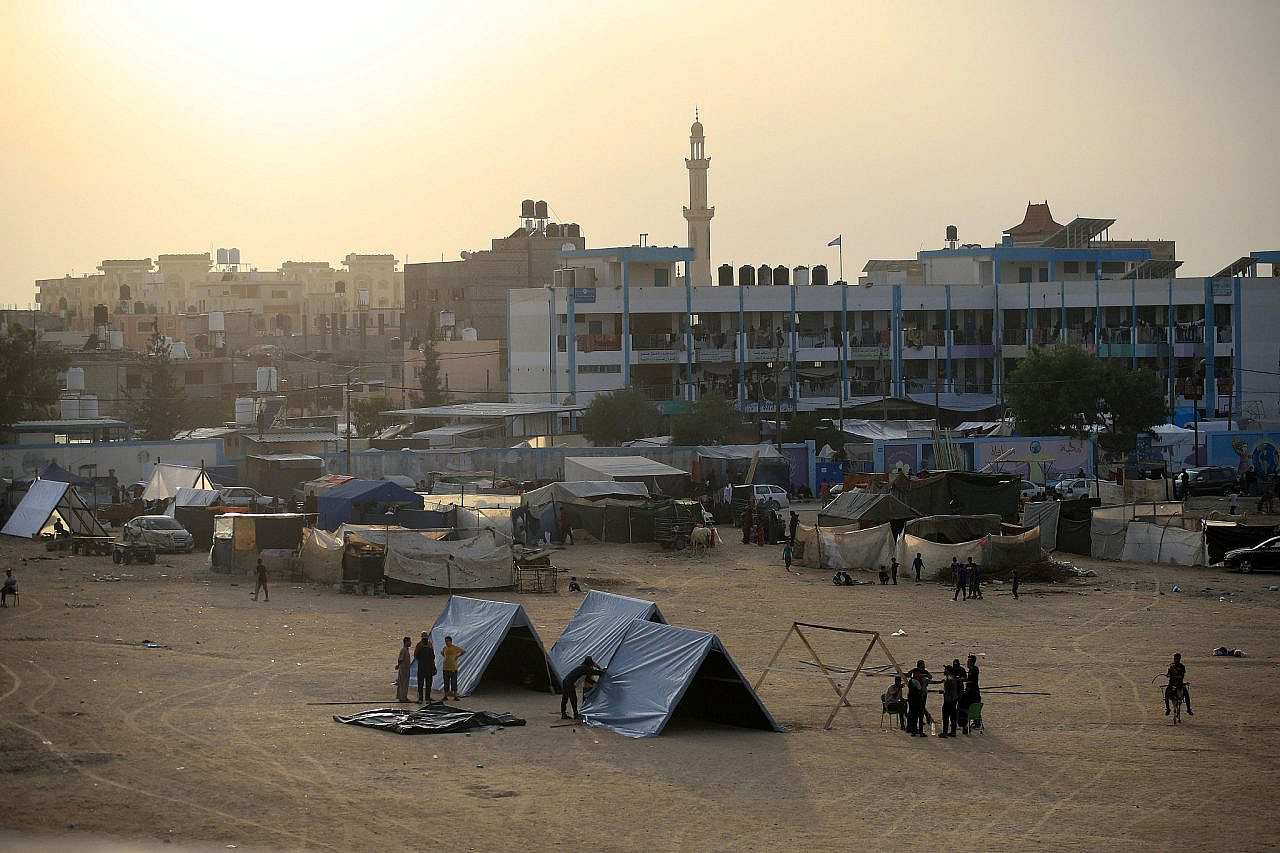
Since Friday morning, though, when the temporary ceasefire came into effect, relative calm has been restored to Khan Younis. Those displaced from areas to the east of the city have even been returning to their homes and agricultural lands to see the devastation caused by Israel’s bombardment.
The more than 1 million Palestinians displaced from the north have not had this same opportunity, however, with Israel explicitly forbidding them from returning to their homes. Hundreds still tried to do so on Friday as the skies fell silent, in the hope of locating missing loved ones; Israeli soldiers opened fire on the crowds, killing two and wounding dozens more.
‘Finally, we can breathe a little’
Rawiya Jabr, a 40-year-old mother of six, has been seeking shelter in a school in Khan Younis after being displaced from an area close to the fence. According to her, the night before the ceasefire began was “a difficult night because of the constant shells and the screams of the children who were crying in fear. We tried to reassure them, but the sounds were terrifying and we were afraid that these shells would reach us and hit our children.”
The following morning, after learning that a temporary ceasefire had taken hold, Jabr returned to her home. “I wanted to inspect it,” she explained. “What happened to it? Was it destroyed? Is it still intact?” Unfortunately, Jabr’s worst fears were confirmed: her home is no longer standing.
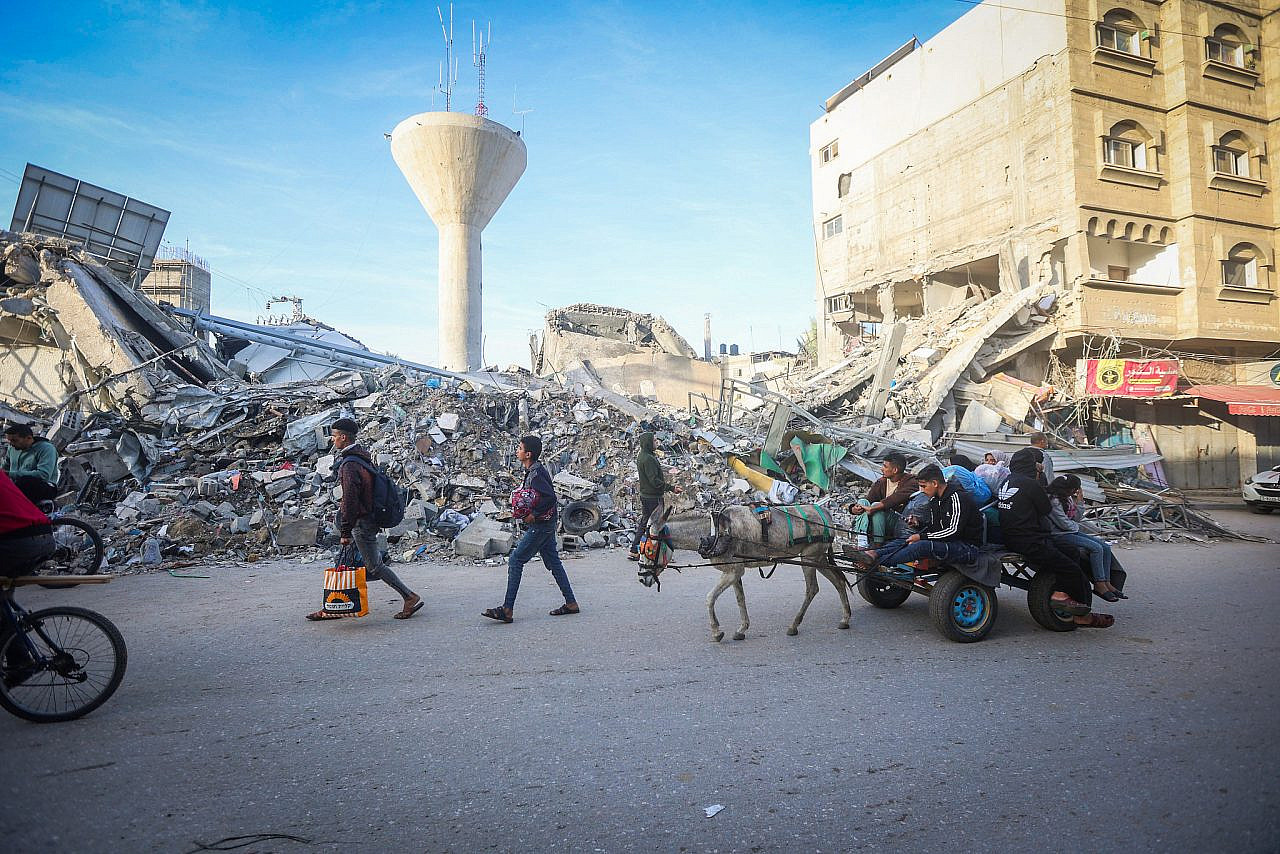
Despite this tragedy, Jabr is relieved that there is a temporary ceasefire. “People here are happy with the truce because they want to rest from the continuous bombing,” she explained. “We need to sleep. I did not sleep one night continuously. I feel very tired. Each of my children has a problem because of the fear of war: some have epileptic seizures and others have involuntary urination. They all need treatment in order to overcome what they lived through during this difficult war.”
Rola Al-Saad, a 25-year-old resident of Khan Younis, described the relief in the city granted by the ceasefire. “Finally, we can breathe a little after the intensity of the continuous bombing for 47 days,” she said on Friday. “Since 7 in the morning, I have been trying to communicate with family and friends. There are many friends who were martyred along with their families, and some of them lost their homes.”
Saeed Qadeeh, a 55-year-old farmer from the town of Khuza’a to the east of Khan Younis, has been sheltering with his family of 14 in one of the city’s UNRWA schools. With the lull in fighting on Friday, he went to inspect his home, and found that it had been totally destroyed.
“There is no intact house in the area or on our street,” Qadeeh explained. “Everything has been destroyed by the occupation. Agricultural lands have been destroyed, and many trees were burned. I cried a lot when I saw this great destruction, this war against civilians in the Gaza Strip. All the neighbors are crying over their destroyed homes. It feels like an earthquake hit the place and left nothing intact.”
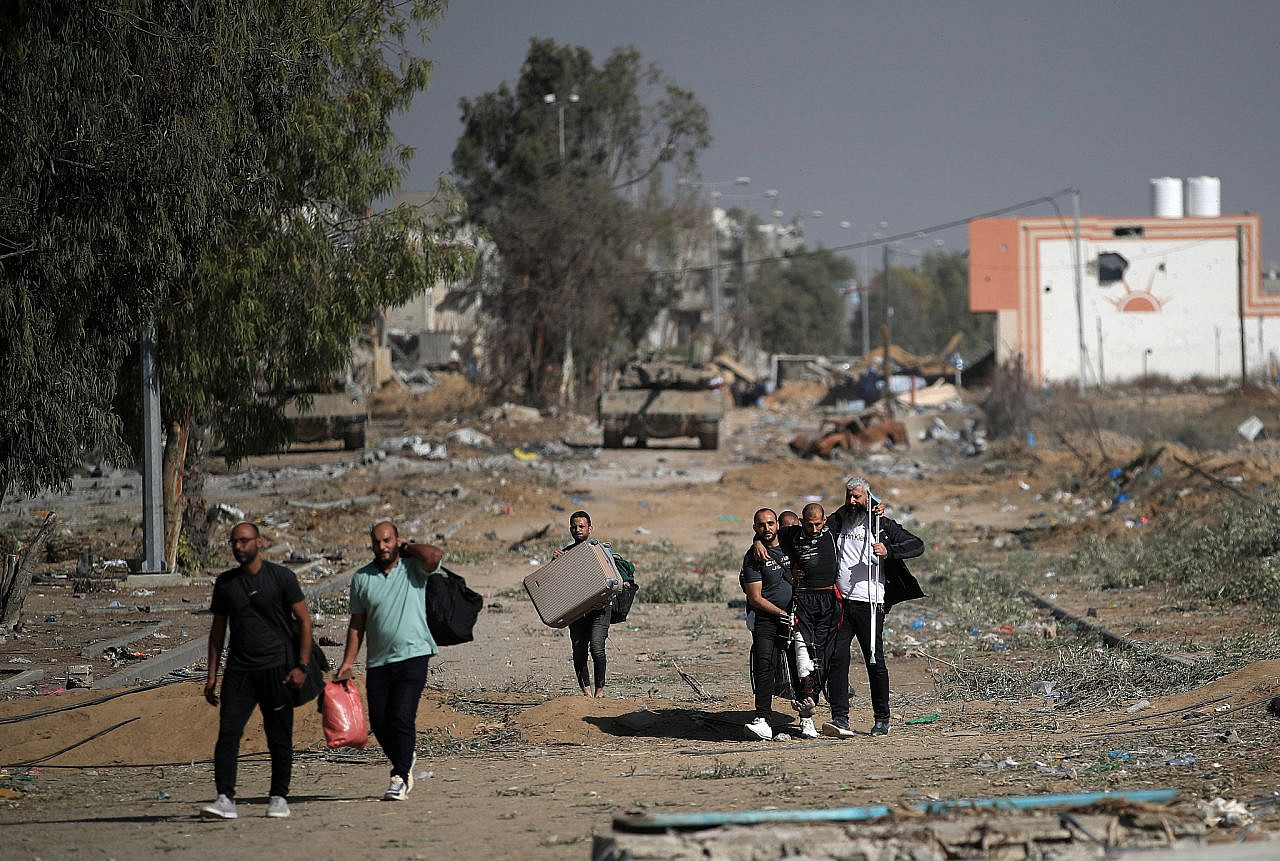
Despite finding his home in ruin, Qadeeh does not intend to leave it again. “I will remain in my destroyed house during the days of the ceasefire, and I will try to stay even if they bomb again,” he said. Life in the schools for displaced people is very difficult. There is no water or food. I fear the spread of diseases. There is no treatment in hospitals. We live in many harsh conditions in this war.”
‘I want to return to my home and my city’
Walid Nofal, 44, arrived in Khan Younis over a month ago after being displaced from Gaza City in the north. For him, the pause in hostilities provides little comfort. “I do not benefit from the ceasefire at all,” he said. “I want to return to my home and my city. I want to check on my family there, with whom I lost contact 10 days ago. I know nothing about them.
“Perhaps the only thing I benefit from is stopping hearing constant explosions and losing many friends,” Nofal continued. “This is a painful war and we want it to end soon. We do not want another war ever. I want my three children to live in peace and security without loss.”
Another resident of Gaza City, 51-year-old Rana Barbari, was also displaced to Khan Younis around two weeks ago with her family. She explained that they had tried to stay in Gaza City as long as possible, knowing that it would be difficult to make it to the south. However, as the Israeli ground invasion intensified, she and her children and grandchildren — 20 people in total — fled southward. When they arrived in Khan Younis, the city was so overcrowded that they were forced to split up across different locations.
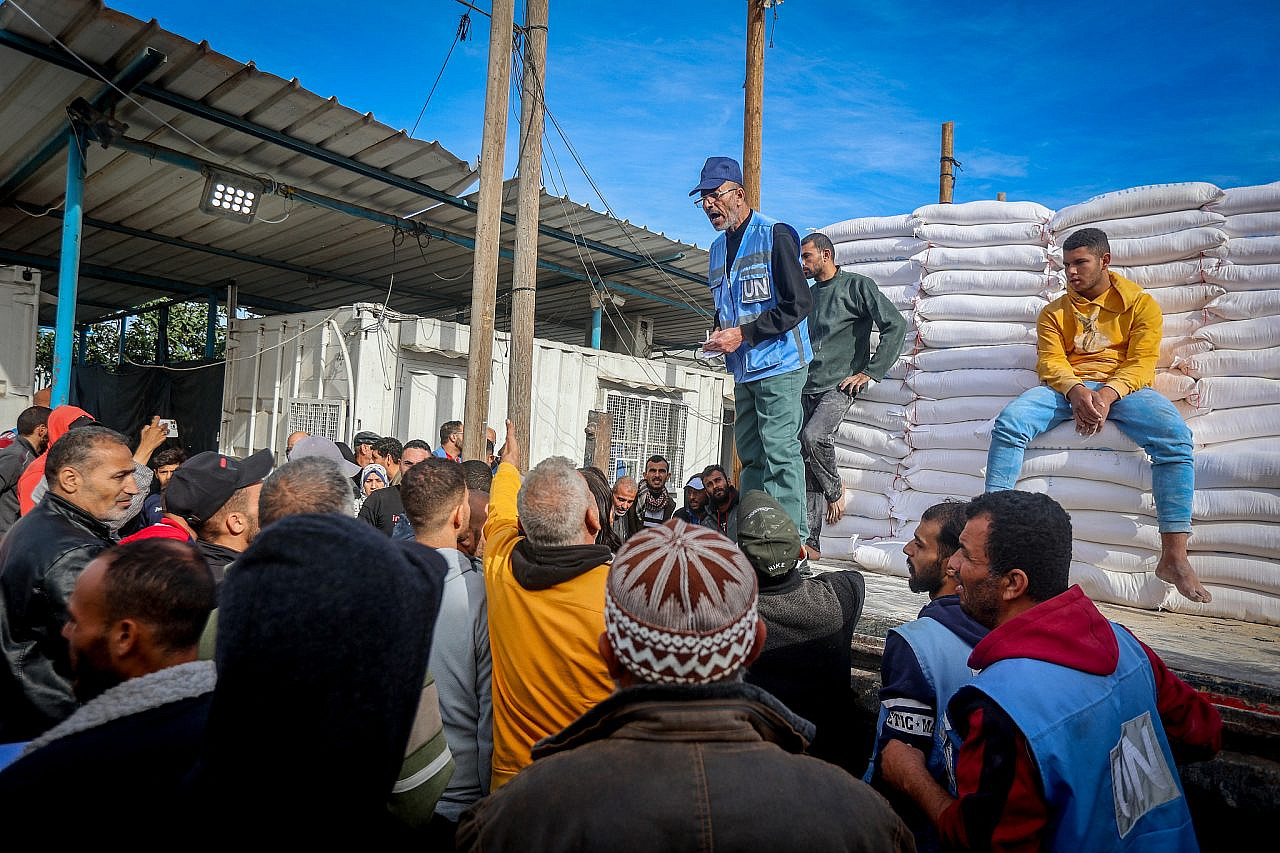
Barbari’s 77-year-old father, a survivor of the Nakba of 1948, did not make the journey south with them. He had been with Barbari’s brothers, and she originally thought he had been wounded and was being treated at Al-Shifa Hospital in Gaza City. As the Israeli attacks against Al-Shifa intensified, the family waited for her father to be transferred to a hospital in the south.
“We searched for him a lot because he was an old man,” she explained. But after much searching on Friday, after the ceasefire took effect, they discovered the terrible news that their father had been killed in Gaza City.
Most read on +972
“I feel great sadness and pain because it has now been two weeks since I have seen my father, and I have not said goodbye to him and buried him,” Barbari said. “This truce does not help us return to our homes and say goodbye to our loved ones.”
It will take a long time to fully comprehend the scale of the devastation that has befallen our land. With thousands still trapped under the rubble, we know that this disaster will continue to unfold in the weeks to come. All we can hope for to prevent even more destruction is the extension of this ceasefire, and an end to this painful war.

